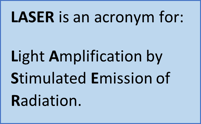Many types of welding have been proven performers for a long time. Welding is, at its core, simply a way of joining two materials. While there are other ways to join metal (e.g., riveting, brazing or soldering), welding has become the method of choice for its availability, high performance and high strength. Essentially, all welding processes are the same: melt the metal in a seam so that it can blend – then fuse – forming one piece. This process is achieved (more or less) satisfactorily depending on the materials in the two pieces, the welder’s experience, the method used, and the costs in time and labor. Weld strength and appearance are also factors.
Bringing Metals Together, One Weld at a Time
The welding process dates to the Bronze Age (~3300 BCE – 1200 BCE) when copper alloys were heated until the metal softened, then pounded together with a hammer on an anvil to create a forge weld. Five-thousand years later, there are three basic welding techniques:
- Gas welding

- Arc welding
- Laser welding
Traditional welding methods (e.g., gas, arc, etc.) generate large amounts of heat. Some welding can get so hot that welded pieces can warp and distort, sometimes ruining the work piece or requiring a heat treatment or other remedial actions (adding to the cost). Welding requires skill, training and specialized, expensive equipment.
Gas welding requires bottles of acetylene and oxygen. The acetylene is mixed with oxygen to create a flame that can be used to melt metal. Gas welding is a slow process and generates large amounts of heat in the materials being welded.
Arc welding involves closely controlled high-amperage electricity to form an arc from the electrode to the workpieces. The welding power source is basically a transformer that modifies incoming AC power so that it can create an arc that melts the work pieces. Filler rod is typically used in this process.
The Future is Now
Laser welding, compared to forge welding, is a relatively new technology. It is used in many high-tech industries, including automotive, aerospace, and oil and gas. Laser welding uses a high-energy laser beam to locally melt the materials being joined. The metals then rapidly solidify after the laser moves on or turns off. Laser welding, when used for joining valve components, increases the pressure-containing ability of the valve as compared to a traditional threaded assembly. The process is repeatable, efficient and strong, producing high-quality assemblies.
Advantage: Laser

Laser welding is very precise, fast, and clean. Lasers are also flexible. Different operations, like cutting or drilling, can be accomplished through straight-forward machine setup changes. Depending on the types of materials being welded, different welding equipment and supplies are required. Although laser welding equipment is capital intensive, operating costs are low. Lasers provide the accuracy, repeatability, speed, and confidence modern manufacturers want. Lasers generate more concentrated heat (high power density) when compared to arc and gas welding. Laser energy can be focused precisely to make the smallest weld seam. Those attributes make the laser ideal for welding thin, heat-sensitive products, as well as dissimilar materials such as copper to aluminum. Bronze alloys lend themselves well to most welding processes, laser is no exception.

Consistency, Thy Name is Laser
So, what types of applications would laser welding offer the most advantages? Laser welding is best applied to production lines where its precision, repeatability, speed, and safety can be controlled. Laser welding consistently repeats the weld from the first part to the final part in the production run.
One industry that is being transformed by laser welding technology is the manufacturing of building products. The laser welding process that is used for manufacturing the NIBCO 585HP is the same high-tech manufacturing technology used in the automotive, aerospace, and defense industries. A high-intensity laser beam is focused right on the body to body-end joint, which melts the bronze alloy material at the seam. The seam then re-solidifies as a high strength, welded part. The result is the next evolution in high performance ball valves backed by a 10-year warranty.